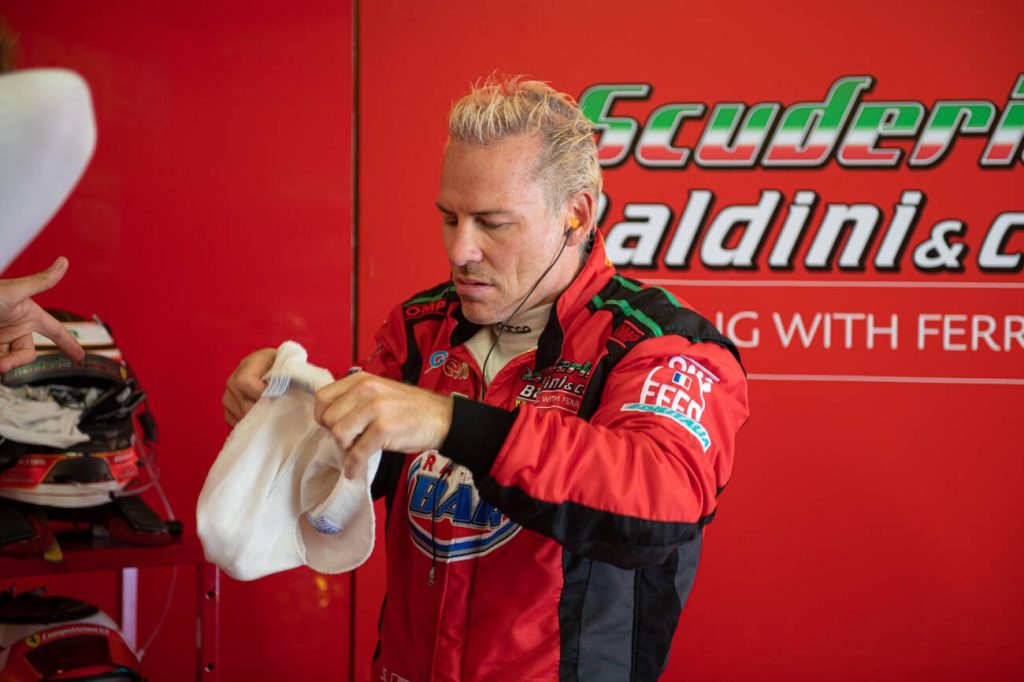From base salaries that can range from $50,000 to a staggering $10 million for top-tier drivers like Brad Keselowski or Kasey Kahne, to prize money that can reach millions in prestigious races like the Daytona 500, and lucrative endorsement deals worth up to $1 million annually, the earning potential for these speed demons is off the charts. So let’s rev our engines and dive into the fascinating realm of race car driver compensation!
Average Base Salary of Race Car Drivers
As a race car driver, your base salary can vary depending on your position, experience, and education. The average earnings for race car drivers range from $50,000 to millions of dollars per year. Your base salary serves as the foundation of your income in the racing industry. However, it’s important to note that additional sources of income, such as sponsorship deals and prize money, contribute significantly to your overall earnings. As you progress in your career and establish yourself as a successful driver, you have the potential to attract lucrative sponsorship deals with major brands. Additionally, participating in international racing events can open up new opportunities for higher earnings and exposure. It’s essential to understand that being a race car driver comes with its own set of risks and rewards. The thrill of competing at high speeds is accompanied by the potential dangers involved in this sport. But with dedication and skill, you can reap the financial benefits that come with being a professional race car driver.
Factors Affecting Race Car Driver’s Earnings
To understand the factors affecting your earnings as a race car driver, consider variables like performance, endorsements, and team affiliations. Your average race winnings play a significant role in determining your income. The more races you win, the higher your earnings will be. Additionally, your team affiliation can impact your earnings. Being part of a successful and well-funded team can lead to higher salaries and bonuses. Sponsorship activation is another crucial factor. The more sponsors you have and the better you promote their brands, the more money you can earn through endorsements and partnerships. Revenue from merchandise sales is also important. Having popular merchandise that sells well can contribute significantly to your overall income. Lastly, having a strong social media presence can attract sponsors and fans, leading to additional opportunities for earning potential in the world of racing.
Importance of Prize Money in Driver’s Income
Prize money plays a significant role in contributing to your overall income as a NASCAR driver. Winning races not only brings you fame and recognition but also allows you to earn substantial prize money. The importance of prize money cannot be overstated, as it adds a significant boost to your earnings. Along with your base salary from the team, prize money forms a crucial part of your total income. Additionally, endorsement deals play a vital role in increasing your earnings as a top earner in the sport. The more successful you are on the track, the more likely you are to attract lucrative sponsorship deals and endorsements. These factors combined have a tremendous impact on your income as a NASCAR driver, making prize money an essential aspect of financial success in the sport.
Exploring Endorsements and Licensing Deals
Endorsements and licensing contribute significantly to a NASCAR driver’s overall earnings. These lucrative opportunities open doors for brand partnerships, licensing agreements, marketing strategies, and even celebrity partnerships. Here are five key points to understand about endorsements and licensing in the world of NASCAR:
- Endorsement opportunities: NASCAR drivers have the chance to endorse products or brands that align with their image and values.
- Brand partnerships: Collaborating with well-known brands can provide financial benefits and increase a driver’s exposure.
- Licensing agreements: Drivers can license their name or likeness for various merchandise, such as die-cast cars, apparel, or video games.
- Marketing strategies: Through endorsements and licensing deals, drivers can enhance their personal brand and reach a wider audience.
- Celebrity partnerships: Partnering with other celebrities or athletes can create unique marketing campaigns that generate additional income.
These endorsement opportunities and licensing deals offer drivers the potential to boost their earnings beyond race winnings and base salaries.
Top Earning Race Car Drivers in Recent Years
In recent years, the top-earning NASCAR drivers have amassed impressive fortunes through various income streams. These drivers not only earn substantial base salaries from their teams but also receive significant prize money from winning races. Additionally, they have the opportunity to boost their earnings through endorsements and licensing deals. Let’s take a look at some salary statistics and analyze the income sources of these top-earning race car drivers.
| Driver | Base Salary | Prize Money | Endorsements & Licensing |
|---|---|---|---|
| Driver A | $10 million | $2 million | $5 million |
| Driver B | $8 million | $3.5 million | $4 million |
| Driver C | $12 million | $1.5 million | $6 million |
| Driver D | $9 million | $2.5 million | $3.5 million |
| Driver E | $11 million | $4 million | $7million |
As we can see from this analysis, the top earning race car drivers have diverse sources of income that contribute to their impressive fortunes. Their base salaries, prize money, and endorsement deals all play a significant role in their overall earnings. It is clear that being a successful NASCAR driver can lead to a lucrative career with multiple income streams.
The Role of Sponsorships in Driver Compensation
Now that you’ve learned about the top earning race car drivers in recent years, let’s dive into the role of sponsorships in driver compensation. Sponsorships have a significant impact on a race car driver’s earnings and play a crucial role in their overall income. Here are some key points to understand:
- Sponsorship Impact: Sponsorships can greatly influence a driver’s salary and overall financial success. Having reputable sponsors can provide substantial financial backing and open doors to various opportunities.
- Salary Averages: While base salaries form an important part of a NASCAR driver’s earnings, sponsorships often contribute significantly to their total income.
- Income Factors: Driver salaries are influenced by multiple factors such as performance, popularity, marketability, and sponsorship deals.
- Prize Money Importance: Winning races not only brings pride but also adds to a driver’s income through prize money. The amount earned varies depending on the race and placement.
- Endorsement Opportunities: NASCAR drivers have ample opportunities for endorsements and licensing deals. These partnerships with brands further boost their earnings.
Overall, sponsorships have a profound impact on a race car driver’s compensation by providing additional streams of income beyond base salaries and prize money winnings.
Salary Disparities in Different Racing Series
To understand the salary disparities in different racing series, you’ll need to examine the financial discrepancies between drivers competing in various leagues. In terms of salary disparities, there are significant variations across different racing series. For example, Formula 1 drivers tend to earn higher salaries compared to drivers in other racing series. This can be attributed to the global popularity and lucrative nature of Formula 1, which attracts substantial sponsorship benefits and international racing circuits. Additionally, gender representation plays a role in salary discrepancies as well. Female drivers often face challenges in securing high-paying contracts due to limited opportunities and sponsorships. Furthermore, rookie driver earnings also contribute to salary disparities, as newcomers typically earn less compared to established and successful drivers who have proven their skills on the track.
How Race Car Drivers Negotiate Contracts
Race car drivers often negotiate contracts to secure favorable terms and maximize their earnings potential. When it comes to driver contract negotiations, there are several key strategies that can be employed to ensure a successful outcome.
- Research the market value: Before entering into contract negotiations, it is important for race car drivers to research and understand the current market value for their skills and experience.
- Define clear objectives: Drivers should have a clear understanding of what they want to achieve from the negotiation process, whether it’s a higher base salary, better contract terms and conditions, or negotiating sponsorship deals.
- Leverage your achievements: Highlighting past accomplishments and successes can strengthen your position during negotiations and demonstrate your value as a driver.
- Seek professional advice: It can be beneficial to enlist the help of agents or legal experts who specialize in race car driver contracts. They can provide guidance on negotiation strategies and ensure that all terms are fair and favorable.
- Be willing to compromise: Negotiations often involve give-and-take. Being open to compromises can help reach an agreement that satisfies both parties.
Emerging Trends in Race Car Driver Compensation
If you want to stay informed about the emerging trends in race car driver compensation, keep an eye on industry news and updates. The world of race car driving is constantly evolving, and understanding the current landscape can help you make informed decisions about your career. One notable trend is the increasing salary growth for top-performing drivers. As competition intensifies, teams are willing to invest more in talented individuals who consistently deliver results. In addition to base salaries, performance incentives have become a common practice, rewarding drivers based on their achievements on the track. Another significant aspect of driver compensation is brand partnerships and sponsorship impact. Successful drivers often secure lucrative endorsement deals with companies looking to leverage their popularity and reach. These partnerships not only provide additional income but also enhance a driver’s personal brand and marketability in the industry.
| Emerging Trends in Race Car Driver Compensation |
|---|
| Salary Growth |
| Performance Incentives |
| Brand Partnerships |
| Sponsorship Impact |
Challenges and Opportunities for Race Car Driver Earnings
One challenge for race car driver earnings is the fluctuating nature of sponsorship deals. Sponsorship trends can change rapidly, making it difficult for drivers to secure long-term contracts and consistent income. Driver contracts often include performance-based clauses, which means their salary can vary depending on their on-track results. This can lead to salary discrepancies among drivers, with top-performing drivers earning significantly more than their counterparts. The impact of social media has also become a factor in driver earnings, as drivers with larger online followings may attract more sponsorships and endorsement opportunities. To mitigate these challenges, race car drivers are increasingly diversifying their income sources by exploring brand partnerships outside of racing and leveraging their personal brands through merchandise sales and appearances.


